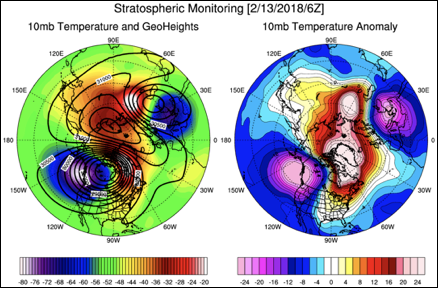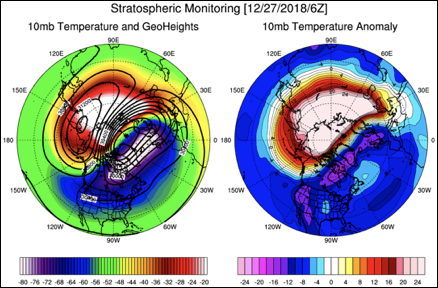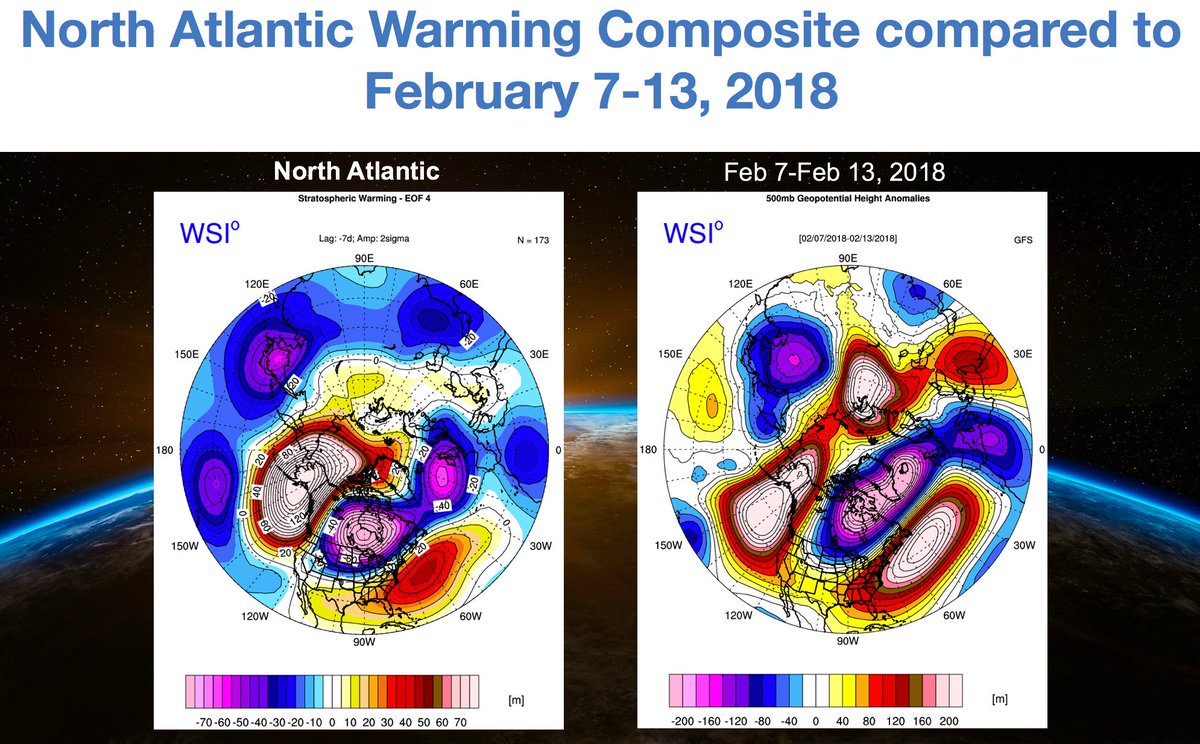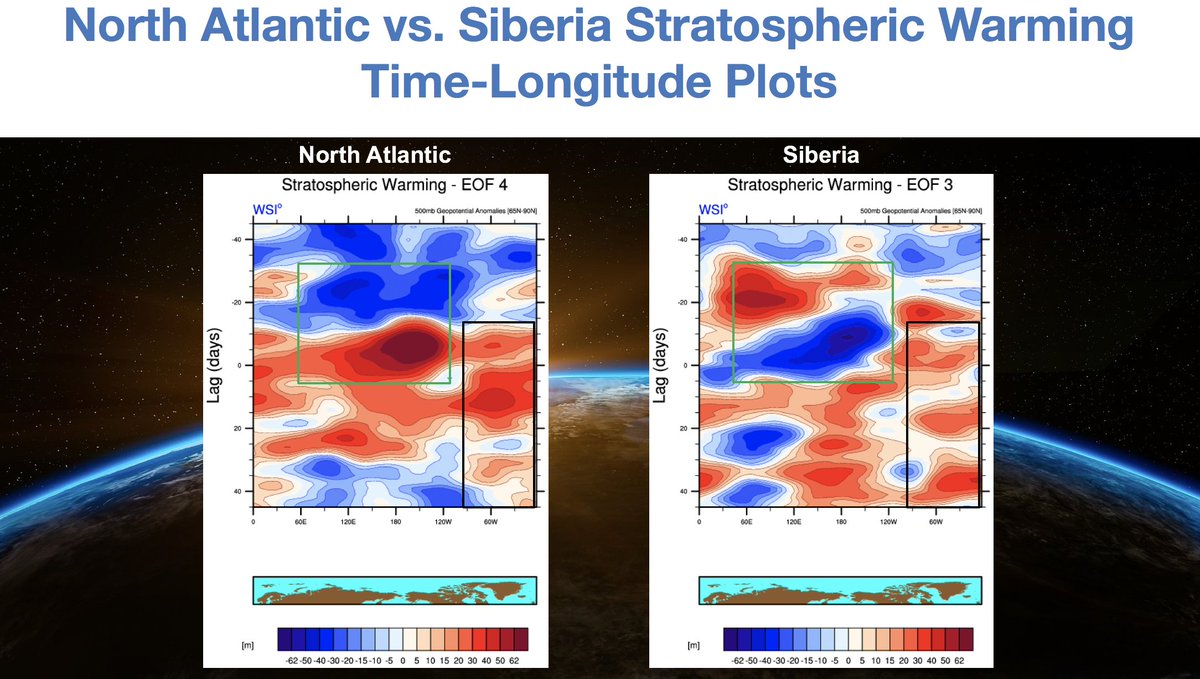One of the things I spoke about in my #AMS2019 talk was this past Dec-Jan Sudden Stratospheric Warming Event compared to February 2018 (produced Beast from the East). I was able to identify warming zones in the stratosphere through rotated EOF analysis on 10mb temperature anoms.
Through the rEOF analysis, I looked at two EOFs... the EOFs that highlighted SSW over the North Atlantic and Siberia. I applied a 2 sigma threshold to only grab the big warming events and performed a lagged DJF 500mb geopotential anomaly composite analysis.
7 days prior to the onset of warming over the North Atlantic/Siberia regions, take a look at the 500Hanom pattern. Polar Opposite between the two SSW zones. North Atlantic Warming events feature more of a La Nina background, where Siberian features more of a classic Nino look.
Here's a 500Hanom comparison of the 7-days prior to the North Atlantic warming event and the composite. Note the similarities to the pattern leading up to the February 2018 SSWE.
Now take a look at this past December, in which the SSW sparked over Siberia. Hello Gulf of Aleutian Cyclone. Nearly a perfect match to the Siberian composite. If forecasters knew this relationship with Siberian warming, they would have never went cold for December 2018.
Now the take home message is both composites eventually lead to blocking over the North Pole and North Atlantic, bringing wintry conditions to the U.S. and Europe. The North Atlantic warming events are much quicker to evolve these conditions, and feature a more persistent -NAO.
Siberian warming events feature less persistent -NAO conditions, though we often see more persistent blocking upstream over Alaska. The big -NAO events appear to be lagged around 20 and 40 days following the big warming over Siberia.
I had little doubt that Winter would appear o/the eastern U.S. & Europe after the failed cold weather in December. You will be able to hear some more of the back story to my talk when it becomes available on the AMS page. Until then, expect the return of Winter in late Jan+Feb
Also, you could draw a conclusion from this (that would need further testing) is that Siberian warming events are more frequently observed in El Nino Winters, where North Atlantic warmings are more common in La Nina Winters.
Just sharing some interesting science with folks who were not able to attend #AMS2019 as it was quite applicable to the current Winter at hand. Ok that's enough Strat chatter out of me for awhile.

 Read on Twitter
Read on Twitter







